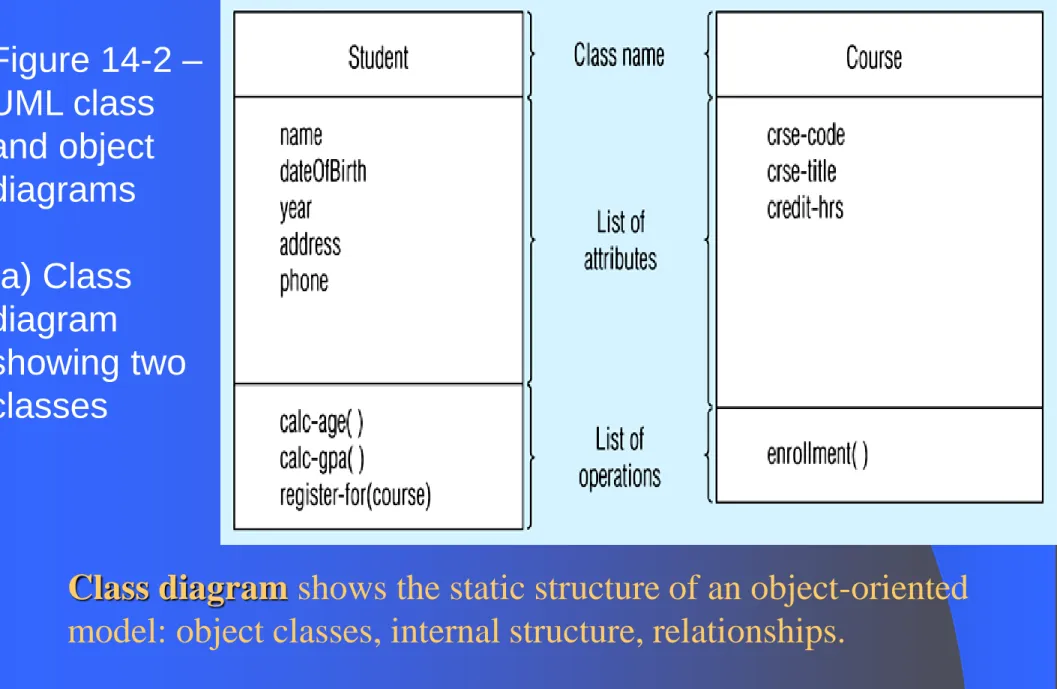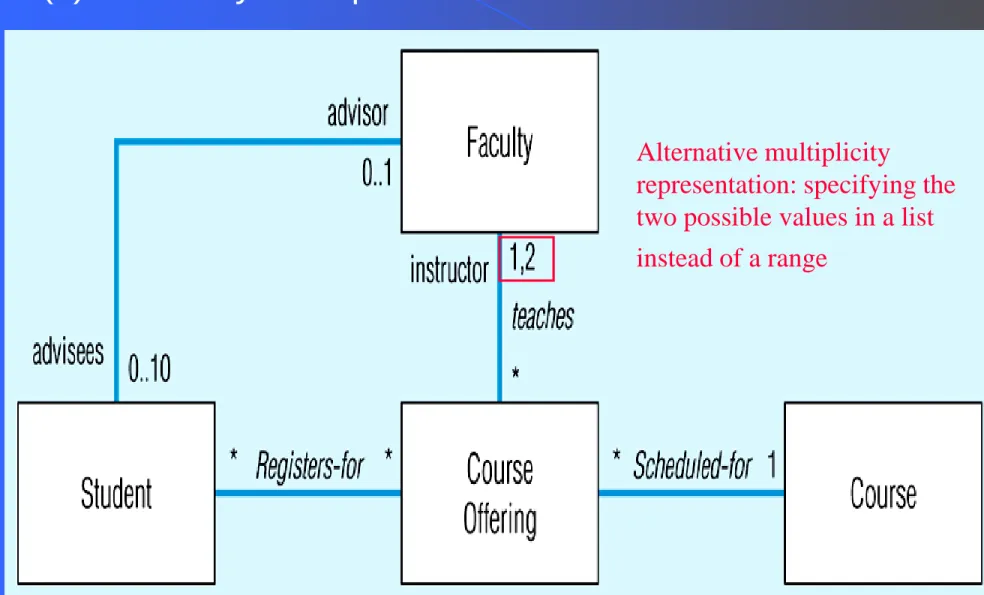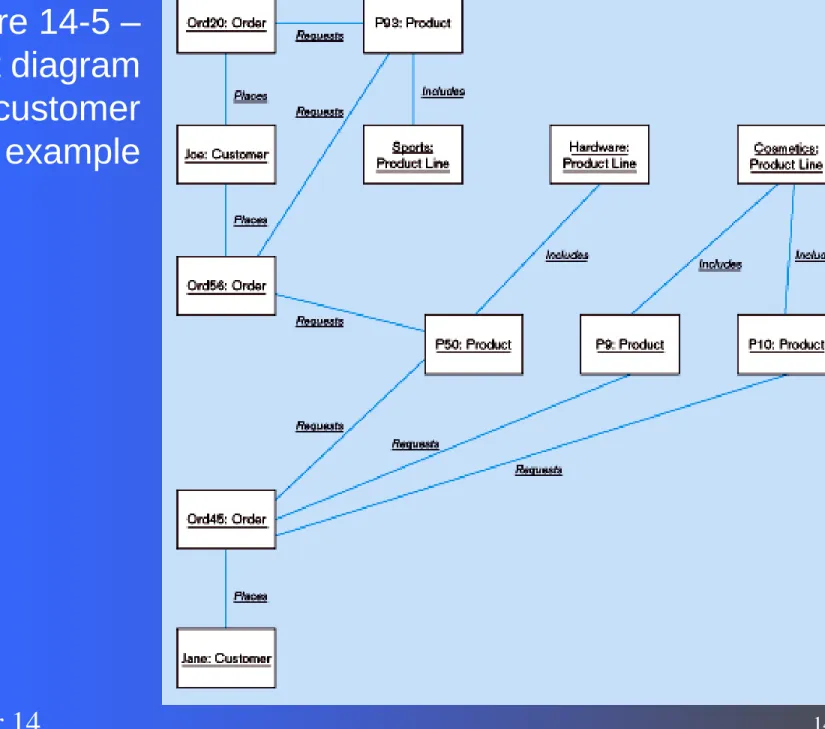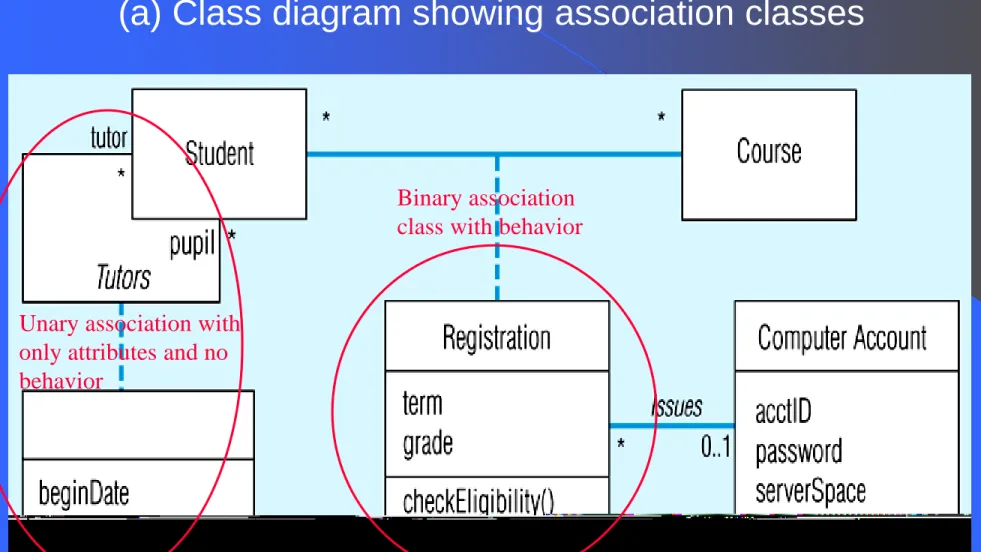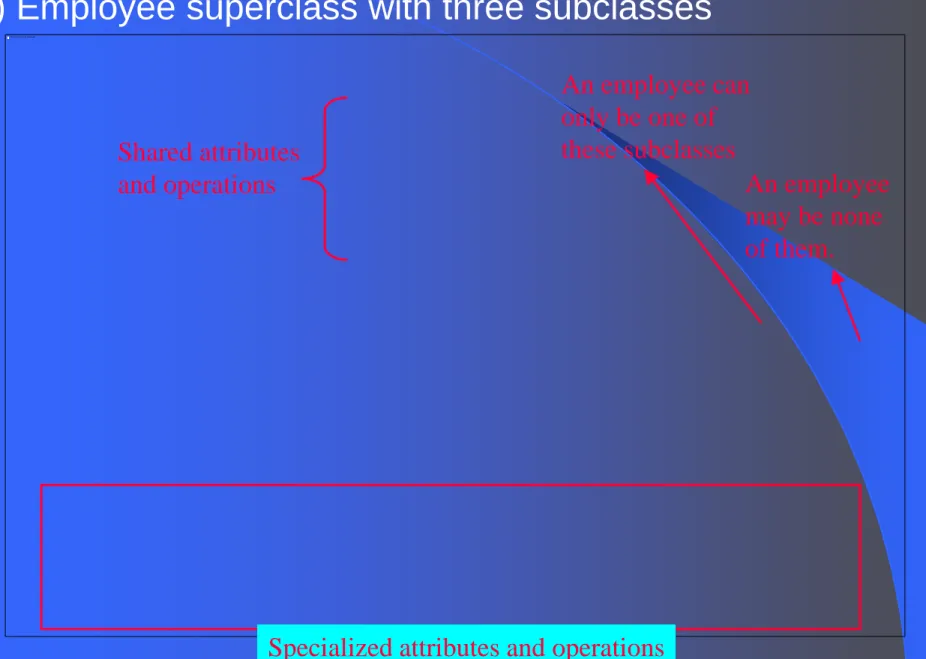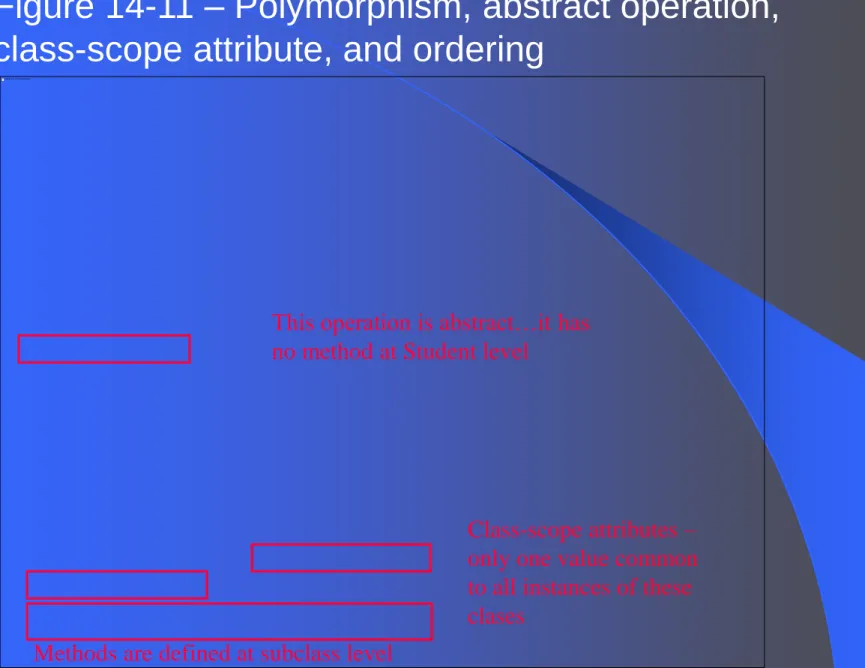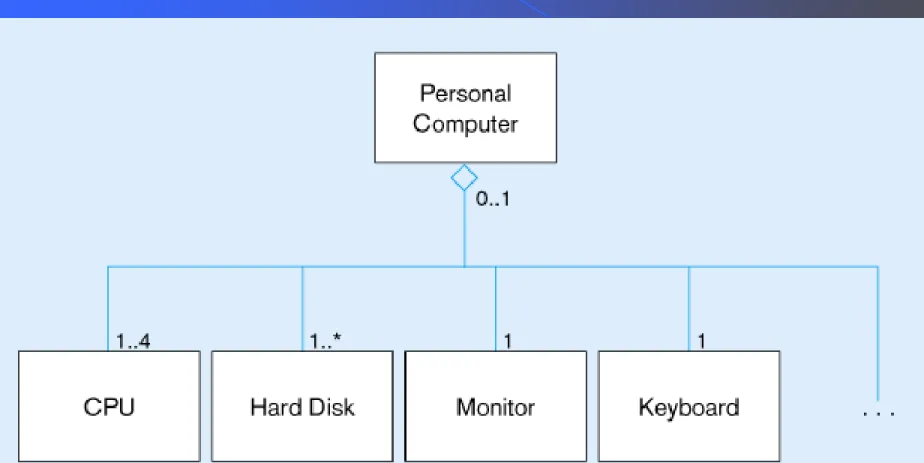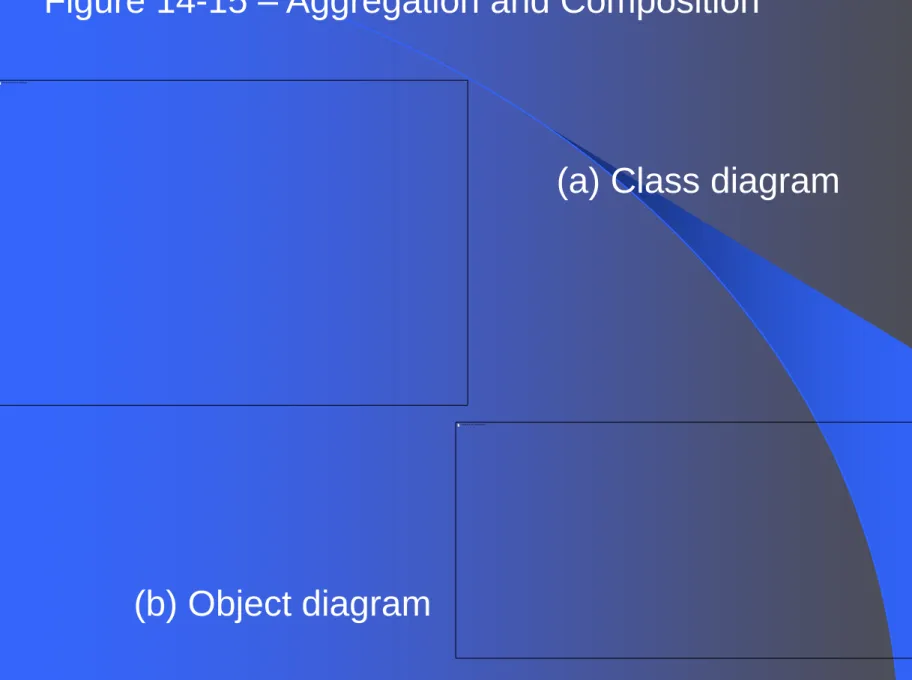Chapter 14:
Object-Oriented Data Modeling
Modern Database Management 6
thEdition
Jeffrey A. Hoffer, Mary B. Prescott, Fred R.
McFadden
What is Object Oriented Data Modeling?
Centers around objects and classes
Involves inheritance
Encapsulates both data and behavior
Benefits of Object-Oriented Modeling
– Ability to tackle challenging problems
– Improved communication between users, analysts, designer, and programmers
– Increased consistency in analysis and design
– Explicit representation of commonality among system components
– System robustness
Figure 14-1 –
Phases of object-oriented systems development cycle
OO vs. EER Data Modeling
Object Oriented
EERClass Entity type
Object Entity instance
Association Relationship
Inheritance of attributes Inheritance of attributes Inheritance of behavior No representation of
behavior
Object-oriented modeling is frequently accomplished using the
Object
An entity that has a well-defined role in the application domain, as well as state,
behavior, and identity
– Tangible: person, place or thing
– Concept or Event: department, performance, marriage, registration
– Artifact of the Design Process: user interface, controller, scheduler
Objects exhibit BEHAVIOR as well as attributes
Different from entities
State, Behavior, Identity
State: attribute types and values
Behavior: how an object acts and reacts
– Behavior is expressed through operations that can be performed on it
Identity: every object has a unique identity, even if all of its attribute values are the
same
Figure 14-2 – UML class and object diagrams (a) Class diagram
showing two classes
Class diagram shows the static structure of an object-oriented model: object classes, internal structure, relationships.
(b) Object diagram with two instances
Object diagram shows instances that are compatible with a given class diagram.
Operations
A function or service that is provided by all instances of a class
Types of operators:
– Constructor: creates a new instance of a class
– Query: accesses the state of an object but does not alter its state
– Update: alters the state of an object
– Scope: operation applying to the class instead of an instance
Operations implement the object’s behavior
Associations
Association:
– Relationship among object classes
Association Role:
– Role of an object in an association
– The end of an association where it connects to a class
Multiplicity:
– How many objects participate in an association.
Lower-bound..Upper bound (cardinality).
Figure 14-3 –
Association relationships of different degrees
Lower-bound – upper-bound Represented as:
0..1, 0..*, 1..1, 1..*
Similar to
minimum/maximum cardinality rules in EER
Figure 14-4 – Examples of binary association relationships (a) University example
Alternative multiplicity
representation: specifying the two possible values in a list instead of a range
(b) Customer order example
Figure 14-5 – Object diagram
for customer order example
Association Class
An association that has attributes or
operations of its own or that participates in relationships with other classes
Like an associative entity in ER model
Figure 14-6 – Association class and link object (a) Class diagram showing association classes
Binary association class with behavior
Unary association with only attributes and no behavior
(b) Object diagram showing link objects
Association class instances
Figure 14-7 –Ternary relationship with association class
Figure 14-8 – Derived attribute, association, and role
Derived attributes an relationships shown with / in front of the name
Derived relationship (from Registers-for and Scheduled-for) Constraint expression for derived attribute
Derived attribute
Generalization/Specialization
Subclass, superclass
– similar to subtype/supertype in EER
Common attributes, relationships, AND operations
Disjoint vs. Overlapping
Complete (total specialization) vs. incomplete (partial specialization)
Abstract Class: no direct instances
Concrete Class: direct instances
Figure 14-9 – Examples of generalization, inheritance, and constraints
(a) Employee superclass with three subclasses
Shared attributes and operations
An employee can only be one of these subclasses
An employee may be none of them.
(a) Abstract patient class with two concrete subclasses
Abstract indicated by italics
Dynamic means a patient can change from one subclass to another over time A patient MUST be
EXACTLY one of the subtypes
Class-Level Attribute
Specifies a value common to an entire class, rather than a specific value for an instance.
Represented by underlining
“=“ is initial, default value.
Polymorphism
Abstract Operation: Defines the form or protocol of the operation, but not its
implementation.
Method: The implementation of an operation.
Polymorphism: The same operation
may apply to two or more classes in
different ways
Figure 14-11 – Polymorphism, abstract operation, class-scope attribute, and ordering
Class-scope attributes – only one value common to all instances of these clases
This operation is abstract…it has no method at Student level
Overriding Inheritance
Overriding: The process of replacing a method inherited from a superclass by a more specific implementation of that
method in a subclass.
– For Extension: add code.
– For Restriction: limit the method.
– For Optimization: improve code by exploiting restrictions imposed by the subclass.
Figure 14-12 – Overriding inheritance
Restrict job placement
Multiple Inheritance
Multiple Classification: An object is an instance of more than one class.
Multiple Inheritance: A class inherits
features from more than one superclass.
Figure 14-13 Multiple inheritance
Aggregation
Aggregation: A part-of relationship between a component object and an aggregate object.
Composition: A stronger form of aggregation in which a part object belongs to only one whole
object and exists only as part of the whole object.
Recursive Aggregation: composition where
component object is an instance of the same class as the aggregate object.
Figure 14-14 – Example aggregation
Figure 14-15 – Aggregation and Composition
(a) Class diagram
(b) Object diagram
Figure 14-16 – Recursive aggregation
Business Rules
See chapters 3 and 4
Implicit and explicit constraints on objects – for example:
– cardinality constraints on association roles
– ordering constraints on association roles
Business rules involving two graphical symbols:
– labeled dashed arrow from one to the other
Business rules involving three or more graphical symbols:
– note with dashed lines to each symbol
Figure 14-17 – Representing business rules
Three- symbol constraint
Two-symbol constraint
Figure 14-18 – Class diagram for Pine Valley Furniture
Company
